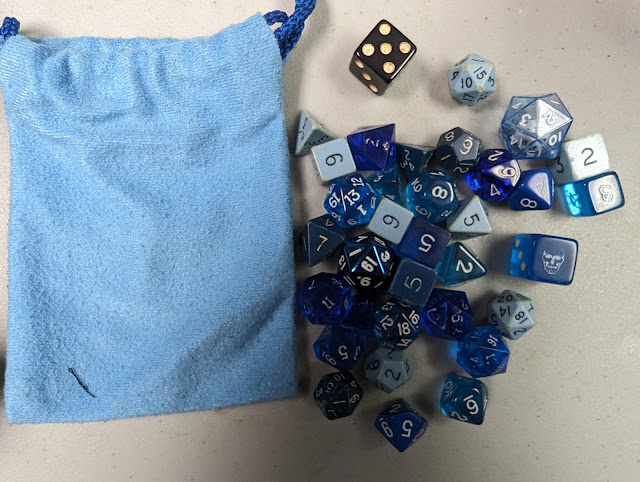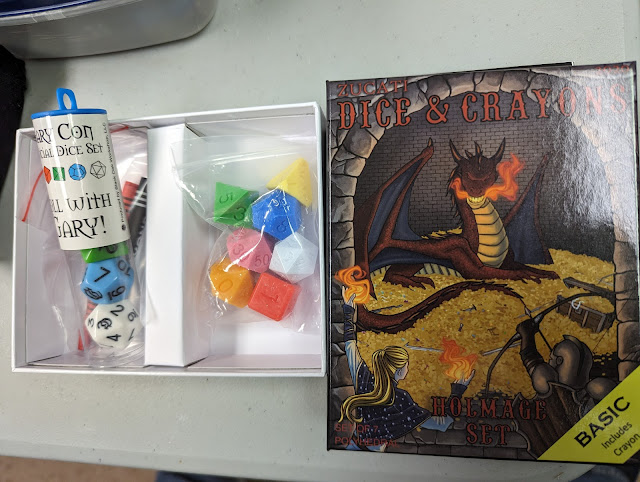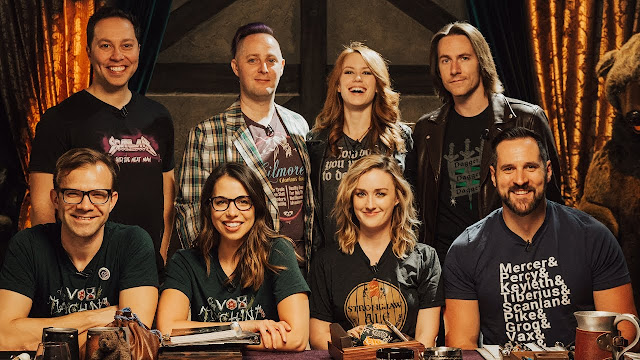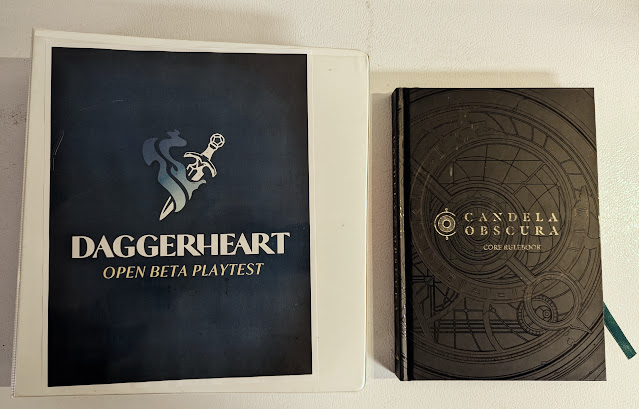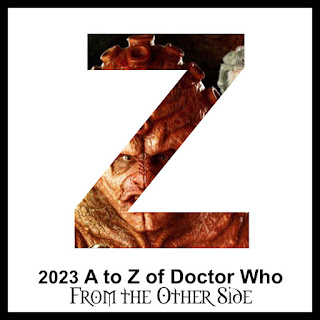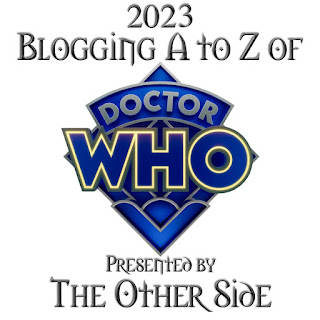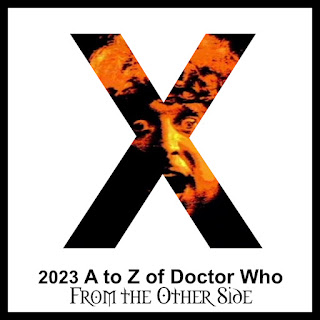There are a lot of "E"s I could have gone with today. Epic. Encounter. Heck, even Eclipse and how it relates to D&D. But there is really only one "E" I want to talk about, and that is the Expert Set.
The Expert Set is the follow up the Basic Set I covered on Tuesday. Just like there is more than one Basic there is more than one Expert.
So, a bit of background.
The Expert Rules for D&D follow the Basic Rules. So these books are compatible with the Basic-era of D&D, the so-called "B/X" rules (Basic/Expert) and the "BECMI" rules. They are not, and I would later discover, part of the same line as Advanced Dungeon & Dragons.
The first Expert set was out in January of 1981. This is the one I started with. Edited by David "Zeb" Cook with Steven Marsh it is sometimes called the Cook/Marsh Expert or B/X Expert. I have a lengthy review of it here: D&D Expert Set.
The second Expert set was edited by Frank Mentzer, so it is sometimes called the Mentzer Expert or most often the BECMI Expert. BECMI was for the entire series of Mentzer edited/authored Basic line of Basic, Expert, Companion, Master, and Immortal rules. I reviewed this Exper set here: BECMI: Expert Set review.
I discussed these differences for my B post, B is for Basic Set Dungeons & Dragons.
The two sets are largely compatible with each other with just minor changes that I detailed in the BECMI Expert review.
The focus here is higher level characters, levels 4 to 14, and moving out of the dungeon into "Wilderness" and, therefore, more dangerous adventures. This is the end of the B/X line but that actually is a feature, not a bug. The adventures from levels 1 to 14 represent some of the most exciting adventures you and your character can do. It was true then and still true today. Many of the official Dungeons & Dragons adventures end at level 15 (even though the limit now is 20), and the post-popular "D&D" adventure out now, Baldur's Gate 3 video game, has a limit of level 12. While the BECMI moves on to level 36 (C & M) and beyond (I), I still think this is the sweet spot for most gamers.
"That's Not REAL D&D!"
I got my start with Holmes Basic then quickly moved on to Moldvay Basic and it's companion Cook/Marsh Expert. And I was very, very happy with that for the longest time. While it is not a perfect overlap, I always equate this edition with my gaming in Jr. High. My then regular DM, Jon Cook, and I would play a lot of this. He also had the B/X books but he also had Advanced D&D (published in 1977) and we played a mix-mash of them both (something I later on discovered was very typical). Sure I wondered why things were different between the games. Clerics had slightly different spell progression and everyone was a bit tougher in AD&D, but I was content. I was happy. Until one night.
This would have been near the end of Jr. High, I know because the Mentzer Expert had not been released yet. I think I must have been about 12 or so. Anyway, Jon and I got invited to a "real" D&D session with some highschool kids. Now let me step back a second here and set the stage. At this time D&D was popular enough that we had a lot of local groups playing completely independent games. I can remember sitting in the lunch room in my Jr. High and listening to friends talk about their D&D games, I was in awe and wonder (of course, I later learned that many of them were just stealing from things like Dune like I was Dark Shadows!). So we got to go to this game and we were told just bring out PHBs (Player's Handbooks), I didn't have one, I had an Expert book.
Well. I got told in no uncertain terms that what I was I playing was NOT REAL D&D. I was like, "what are you talking about?" Gygax's name was on the insider cover. It was published by TSR. I had very nearly the same rules you did.
My friends, I had entered into my first battle of "The Edition Wars," and I did not come out unscathed. "Edition Warring" in D&D is the misguided (and stupid, yeah I said it) notion that one edition is better than the other. There were only two editions (maybe four) editions of D&D out at this point and I am already getting shit for it? The effect it had on me was enough that I can still remember it over 44 years later, AND it kept me from playing the BECMI version of D&D for nearly half that time.
Which is, of course, stupid. It also was not the last time I'd make a bad choice based on editions, but at least the next time was all my own doing. I'll detail that on Sunday.
Today, if I am going to go back and play some "Classic D&D" chances are real good I mean the B/X versions of Basic and Expert.
It is also my favorite to write and publish for with four of my books designed specifically for the B/X rules in mind, via the Old School Essentials clone game.
- The Craft of the Wise: The Pagan Witch Tradition
- The Warlock
- Monster Mash
- Monster Mash II: A Midsummer Night's Dream
Much like what I said for the Basic Set any future "Basic" or Introductory set of D&D needs to do what these sets did. Introduce me to the game, give me some options, an adventure to play, and if possible, some dice! I still have my original Basic and Expert sets of dice.
Tomorrow I talk about a topic that has dominated my posting all year long, The Forgotten Realms.









